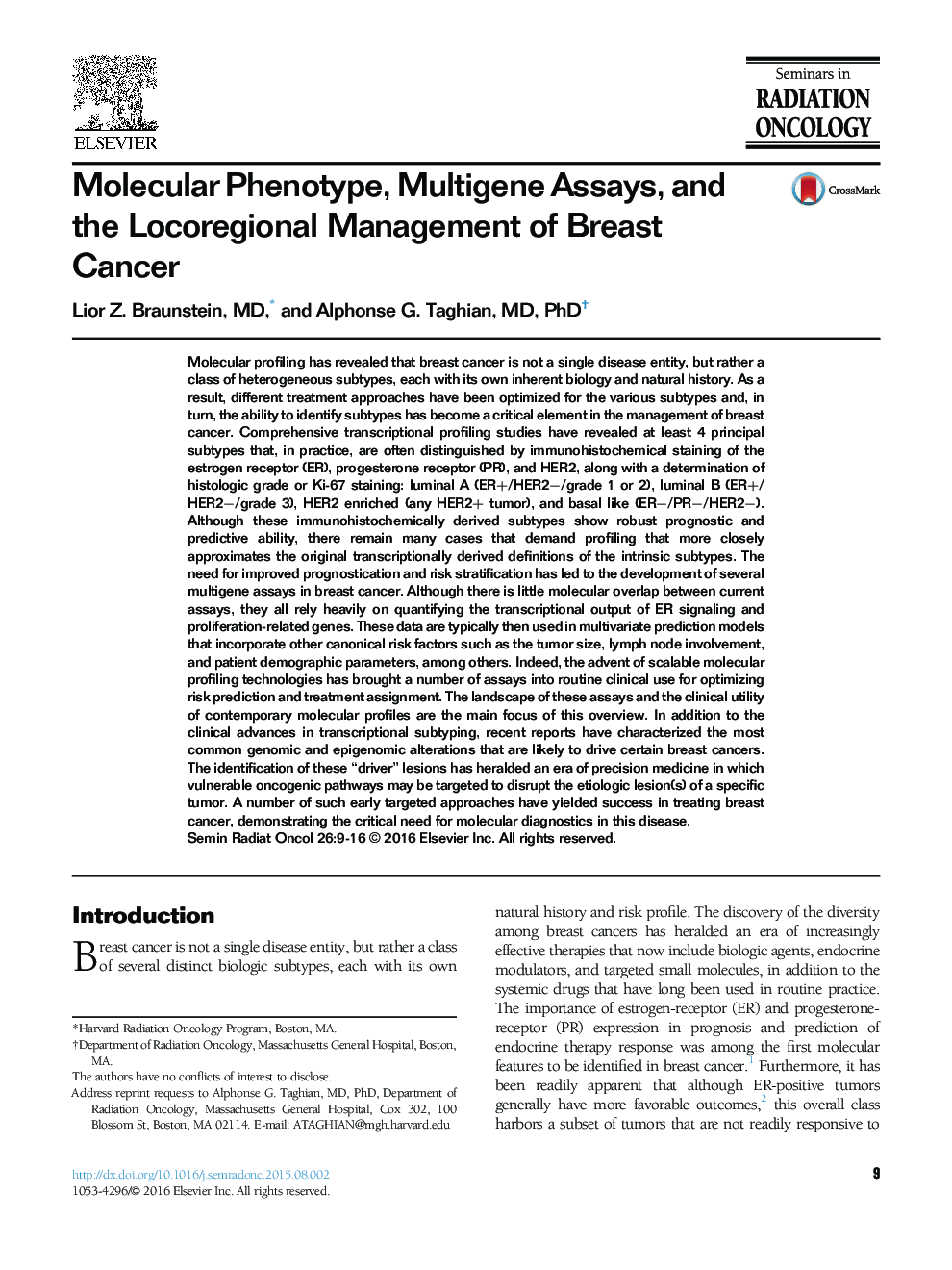| کد مقاله | کد نشریه | سال انتشار | مقاله انگلیسی | نسخه تمام متن |
|---|---|---|---|---|
| 2726567 | 1146518 | 2016 | 8 صفحه PDF | دانلود رایگان |
Molecular profiling has revealed that breast cancer is not a single disease entity, but rather a class of heterogeneous subtypes, each with its own inherent biology and natural history. As a result, different treatment approaches have been optimized for the various subtypes and, in turn, the ability to identify subtypes has become a critical element in the management of breast cancer. Comprehensive transcriptional profiling studies have revealed at least 4 principal subtypes that, in practice, are often distinguished by immunohistochemical staining of the estrogen receptor (ER), progesterone receptor (PR), and HER2, along with a determination of histologic grade or Ki-67 staining: luminal A (ER+/HER2−/grade 1 or 2), luminal B (ER+/HER2−/grade 3), HER2 enriched (any HER2+ tumor), and basal like (ER−/PR−/HER2−). Although these immunohistochemically derived subtypes show robust prognostic and predictive ability, there remain many cases that demand profiling that more closely approximates the original transcriptionally derived definitions of the intrinsic subtypes. The need for improved prognostication and risk stratification has led to the development of several multigene assays in breast cancer. Although there is little molecular overlap between current assays, they all rely heavily on quantifying the transcriptional output of ER signaling and proliferation-related genes. These data are typically then used in multivariate prediction models that incorporate other canonical risk factors such as the tumor size, lymph node involvement, and patient demographic parameters, among others. Indeed, the advent of scalable molecular profiling technologies has brought a number of assays into routine clinical use for optimizing risk prediction and treatment assignment. The landscape of these assays and the clinical utility of contemporary molecular profiles are the main focus of this overview. In addition to the clinical advances in transcriptional subtyping, recent reports have characterized the most common genomic and epigenomic alterations that are likely to drive certain breast cancers. The identification of these “driver” lesions has heralded an era of precision medicine in which vulnerable oncogenic pathways may be targeted to disrupt the etiologic lesion(s) of a specific tumor. A number of such early targeted approaches have yielded success in treating breast cancer, demonstrating the critical need for molecular diagnostics in this disease.
Journal: Seminars in Radiation Oncology - Volume 26, Issue 1, January 2016, Pages 9–16
